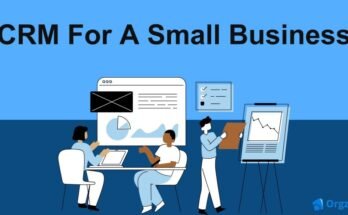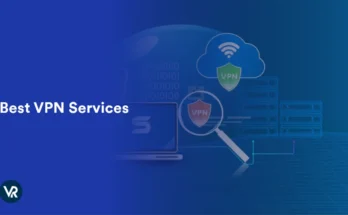In today’s hyper-competitive digital economy, SaaS startups operate in a fast-paced environment where data is their most powerful asset. With competition growing fiercer by the day, relying on gut instinct or past performance is no longer enough to drive sustainable growth. That’s where predictive analytics comes in.
Predictive analytics transforms raw data into actionable insights that help SaaS founders make smarter decisions, anticipate customer needs, reduce churn, improve product performance, and ultimately scale their businesses efficiently. This comprehensive guide explores how predictive analytics works, why it’s critical for SaaS startups, and how to implement it for real-world results.
What is Predictive Analytics?
Predictive analytics is a branch of data analytics that uses historical data, statistical modeling, machine learning, and artificial intelligence (AI) to forecast future outcomes. Rather than simply describing what happened, predictive analytics tells you what is likely to happen next.
In the context of a SaaS startup, predictive analytics can be used to:
- Forecast customer churn
- Identify high-value leads
- Optimize pricing strategies
- Improve customer lifetime value (CLV)
- Predict feature adoption
- Reduce support ticket volumes
- Drive product roadmap decisions
By proactively identifying patterns and trends, predictive analytics allows SaaS companies to act before issues arise or capitalize on emerging opportunities ahead of competitors.
Why Predictive Analytics Matters for SaaS Startups
1. Customer Retention (Churn Reduction)
Acquiring a new customer is far more expensive than keeping an existing one. With predictive analytics, SaaS companies can build models that flag early signs of churn — such as reduced usage, delayed logins, or declining support interactions.
These insights allow companies to engage at-risk customers with retention campaigns, personalized support, or product nudges.
2. Revenue Forecasting
Startups often face unpredictable revenue streams. Predictive analytics enables accurate Monthly Recurring Revenue (MRR) or Annual Recurring Revenue (ARR) forecasting by analyzing patterns in customer behavior, contract renewals, and upsells.
This forecasting supports better budgeting, hiring, and investor relations.
3. Sales and Marketing Efficiency
Not all leads are created equal. Predictive lead scoring helps SaaS companies focus on the prospects most likely to convert based on past behavior, firmographics, and engagement patterns.
This improves sales productivity and marketing ROI.
4. Product Optimization
Predictive analytics can detect usage trends that highlight which features customers love — and which are being ignored. This empowers product teams to prioritize improvements, retire unnecessary features, and design a user experience that fosters stickiness.
5. Customer Lifetime Value (CLV) Growth
Knowing which customers are likely to stay and spend more helps SaaS startups refine pricing models, personalize upsell campaigns, and improve account management strategies.
How Predictive Analytics Works in SaaS
Here’s a step-by-step breakdown of how predictive analytics functions within a SaaS environment:
1. Data Collection
The foundation of predictive analytics is data. SaaS startups collect data from multiple sources, including:
- User behavior (logins, clicks, feature usage)
- CRM tools (e.g., HubSpot, Salesforce)
- Product analytics platforms (e.g., Mixpanel, Amplitude)
- Customer support tickets
- Subscription and billing systems
- Social media and email engagement
2. Data Preparation
Raw data must be cleaned, normalized, and formatted for analysis. This includes:
- Removing duplicate entries
- Handling missing values
- Structuring data by timeframes, user IDs, or cohorts
- Categorizing events (e.g., “completed onboarding” vs. “inactive 30+ days”)
3. Model Building
Using machine learning algorithms, analysts create models that identify patterns in historical data. Common algorithms include:
- Logistic Regression – For churn prediction
- Random Forest – For feature adoption and behavior analysis
- K-Means Clustering – For customer segmentation
- Time Series Analysis – For revenue and usage forecasting
4. Model Validation
The model is tested on unseen (future) data to check its accuracy and prevent overfitting. Performance metrics include:
- Precision and Recall
- F1 Score
- AUC-ROC (for classification)
- RMSE (for regression)
5. Prediction and Deployment
Once validated, the model can be deployed in real-time or batch environments to provide ongoing predictions. These outputs are often embedded into dashboards, CRMs, or product management tools.
Use Cases of Predictive Analytics in SaaS
✅ 1. Churn Prediction
Problem: A SaaS company experiences a 15% monthly churn rate.
Predictive Insight: Users with fewer than three logins in the first two weeks have a 70% chance of churning.
Action: Trigger onboarding assistance emails and live chat prompts for low-engagement users.
✅ 2. Upsell and Cross-Sell Optimization
Problem: Upsell rates are stagnant across existing users.
Predictive Insight: Customers who use advanced reporting features are 4x more likely to upgrade to the pro plan.
Action: Promote reporting features to users on lower tiers and launch in-app upgrade nudges.
✅ 3. Dynamic Pricing Adjustments
Problem: Trial users aren’t converting at expected rates.
Predictive Insight: Enterprise users from companies with over 200 employees convert at a 2% rate when offered a discount within 7 days.
Action: Implement predictive pricing triggers for early discount offers based on user profiles.
✅ 4. Support Load Forecasting
Problem: Support teams are overwhelmed during product updates.
Predictive Insight: Ticket volume spikes by 30% in the 48 hours following feature releases.
Action: Staff support in advance, create preemptive help docs, and build in-product guidance.
Implementing Predictive Analytics: A Guide for SaaS Startups
Step 1: Define Clear Business Goals
Don’t start with the tools — start with the problem. Choose one area to improve, such as:
- Reducing churn
- Improving MRR forecasting
- Increasing trial-to-paid conversion rates
Step 2: Invest in the Right Tools
Depending on your team size and budget, consider:
- Data Warehousing: Snowflake, BigQuery, Amazon Redshift
- Analytics Tools: Mixpanel, Heap, Amplitude
- BI & Visualization: Tableau, Looker, Power BI
- Machine Learning Platforms: DataRobot, AWS SageMaker, Azure ML
Step 3: Hire or Train a Data Team
You’ll need:
- Data Engineers to structure pipelines
- Data Analysts to interpret patterns
- Data Scientists to build predictive models
For early-stage startups, consider outsourcing or using low-code platforms.
Step 4: Ensure Data Quality and Security
Clean, reliable, and compliant data (especially under GDPR or CCPA) is non-negotiable.
Step 5: Act on Insights
The value of predictive analytics lies in taking action:
- Automate triggers in your CRM
- Adapt marketing campaigns based on predictions
- Inform your product roadmap with usage forecasts
Predictive Analytics Challenges and How to Overcome Them
| Challenge | Solution |
|---|---|
| Data silos across departments | Implement centralized data warehouses |
| Limited in-house expertise | Use AI-driven platforms or hire consultants |
| Unclear ROI or attribution | Start small, measure KPIs, and iterate |
| Data privacy and compliance | Ensure encryption, user consent, and transparency |
| Over-reliance on models | Combine with human decision-making and qualitative insights |
Real-World SaaS Companies Using Predictive Analytics
1. Intercom
Uses predictive analytics to identify high-value leads and optimize in-product messaging based on behavioral signals.
2. Slack
Applies predictive usage models to refine onboarding and drive feature adoption, improving long-term retention.
3. Zendesk
Forecasts support volume and allocates resources dynamically using time series analysis.
4. HubSpot
Utilizes lead scoring algorithms to automate sales workflows and personalize outreach at scale.
Measuring the ROI of Predictive Analytics
Track the before-and-after impact on key SaaS metrics:
- 🔻 Churn rate decrease (e.g., 15% to 9%)
- 🔺 Customer lifetime value (CLV)
- 🔺 Conversion rate from free to paid plans
- 🔺 Revenue forecasting accuracy
- 🔻 Support cost per customer
- 🔺 Feature adoption and NPS scores
The Future of Predictive Analytics in SaaS
In 2025 and beyond, predictive analytics will continue to evolve with:
- Real-time AI assistants embedded in dashboards
- Hyper-personalized UX using behavioral predictions
- Predictive DevOps, where code deployment is risk-scored in advance
- AutoML (Automated Machine Learning), democratizing access to modeling
The integration of generative AI and predictive analytics will also unlock new frontiers — such as automatic generation of reports, content, and strategic recommendations.
Final Thoughts
Predictive analytics is no longer a luxury for SaaS startups—it’s a competitive necessity. By leveraging data to anticipate customer behavior, improve product experiences, and optimize growth, early-stage companies can gain a critical edge in the crowded SaaS marketplace.
The key is to start simple, focus on one impactful metric, and scale your capabilities as your business matures. With the right tools, team, and mindset, predictive analytics will not only forecast your future — it will help you shape it.




